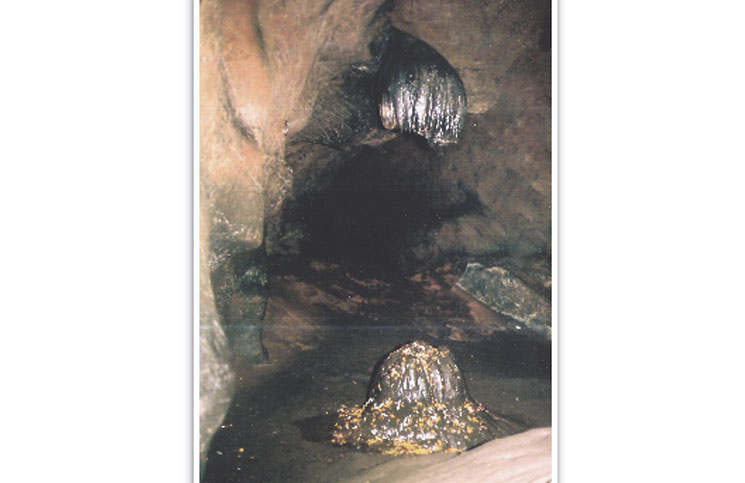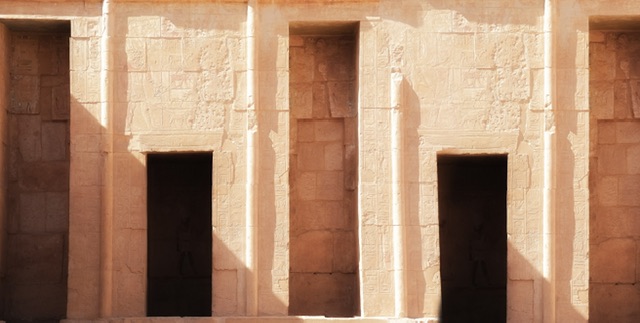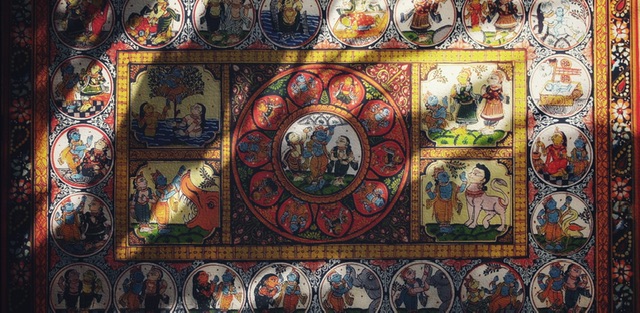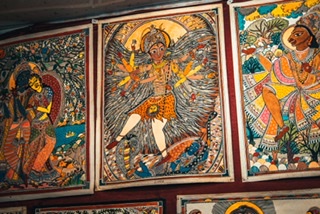475 kilometres to the east of Delhi in the Pithoragarh district in the state of Uttarakhand lies the majestic caves of Patal Bhuvaneshwar. One is left with a sense of awe when visiting this creation of God; one of the seven subterranean wonders of the world. Deep inside the land at a height of 1350 meters above the sea level the caves seem to be in a world of their own.
Patal Bhuvaneshwar is a lime stone cave which is further divided into a set of complex caves. One has to descend a flight of 82 stairs to reach the underground tunnels. On entering the caves one comes across a big idol of Sheshnag holding the earth on its hood.
A havan kund awaits the visitor next. It is said that King Janamejaya performed Naga-yagya here, as instructed by Rishi Ullanga to avenge the death of his father King Parikshit. Hanging above the kund is the adder Takshaka ready to strike at Janamejaya. Yagyas are a powerful medium to interact with divine beings for manifestation of thoughts and desires. The Guru gives the shishya a specific mantra jaap depending upon his/her desire and channelizes energy into the mantra. Upon the completion of jaap, a yagya is performed for its siddhi. For example, Janamejaya did sadhna for avenging the death of his father, and by the grace of Guru was blessed with the phenomenal force to wipe out the entire clan of Nagas, along with Nagraja Takshak who had the protection of Indra dev.
One has to then descend on the spine of Sheshnag to reach the place where the water trickles from an eight-petalled lotus on the head of Lord Ganesh. On proceeding further into the caves one gets to see the idols of Badrinath, Kedarnath and Amarnath in the form of a linga. By their side is Kalabhairava, mouth open and tongue protruding. It is believed that the passage from its mouth to tail depicts the path to Brahma loka. After Kalabhairava is the seat of Lord Shiva with Patalchandi, wearing a garland of human skulls, enthroned on a lion.
There are four entrances inside the cave named as ‘Ran-dwar’ ‘Paap-dwar’, ‘Dharam-dwar’ and ‘Moksha-dwar’. Paap-dwar was closed soon after the death of Ravana and Ran-dwar, the road to war was closed down after the great Mahabharata war. At present only two gateways remain open.
Skandapurana says that people who pass through the Dharam-dwar with faith will attain it. In front of the door is a rostrum with an image of the Parijatha tree full of beautiful flowers and leaves. It is said to have been brought by Lord Krishna from the abode of Dev Indra.
Moving further is a cave where Rishi Markandeya composed Markandeya Purana. Ahead, one gets a view of Kamadhenu bathing the head of Brahmakapali (the chopped head of Brahma) with her milk.
On walking a bit further the viewer gets to see seven ponds with a swan with its head turned back. Once Lord Brahma appointed the swan to protect the water from snakes but instead it drank the water thus getting cursed that its head will always remain turned. Ahead, out of the matted locks of Lord Shiva flows Ganga, with all gods and goddesses offering worship to it.
The cave is further adorned with various lingams of different deities. Further down the path one comes across the idols of Shiva and Parvati guarding the door of heaven. It is believed that Pandavs took this way to go to heaven. The journey of paatal ends here.





